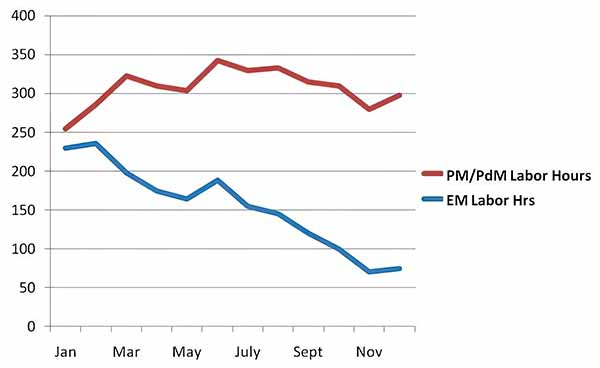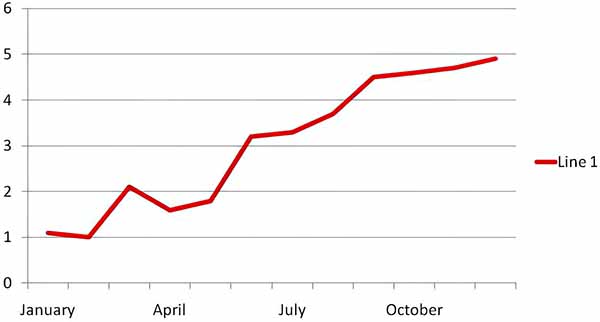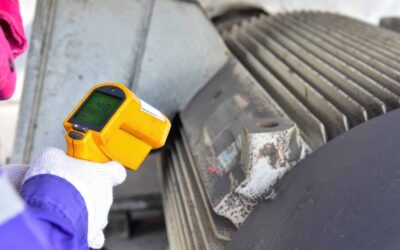For maintenance and reliability, the definition of proactive is:
- To act before the cost of doing so increases
- To act before the necessity of the situation demands it
“A great Maintenance Manager sees the relationship of poor performance and the lack of good maintenance routines. Poor performance always leads to the lack of maintenance routines or poor execution of existing routines.” – Rick Mullen, Global Reliability Leader, AB-InBev
Mr. Mullen’s statements drive home the fact that a Maintenance Manager holds the key to a plant, site, or mine’s success. Their knowledge of their site’s maintenance strategies and how they are executed, as well as how effective they are, is key to a successful Maintenance Manager. It is also the difference between high-performing and poor-performing operations.

Think about Rick Mullen’s statement and its relation to this graph. PM/PdM labor hours are relatively stable and emergency labor hours show the PM process is ineffective.
What is the goal of a Maintenance Manager? To ensure that all maintenance personnel are aligned and executing the company’s proactive work to standard so that the company meets its business goals 100% of the time.
How Proactive Maintenance Managers Tackle Each Day with Purpose
Morning
The Maintenance Manager begins the day by visiting each Maintenance Supervisor for 5 minutes, about 30-60 minutes after their shift starts, looking for abnormalities from the past 24 hours that may impact this week’s production goal or maintenance schedule.
Example: A breakdown last night on line 1 caused a loss of 12,000 units of production because of a loose bolt; an investigation initiated by Maintenance Engineering; one mechanic assigned to assist ME. Report to the Maintenance Manager within 48 hours when the loss exceeds a specific amount.
Production Manager Informal Meeting (10-15 minutes max)
The Maintenance Manager meets with production management first to determine if any issues have occurred in the past 24 hours that he was not aware of or any issues that may arise in the next 24 hours. They both review the 24-hour production rate, quality, and problems.
Key Performance Indicator Review (10 minutes)
Next, the maintenance manager looks at his maintenance key performance indicator (KPI) dashboard to see if any problems exist or may happen in the next week or one month. There should be KPI owners listed on the dashboard who will send a report to the Maintenance Manager if a KPI is acting in a state that maintenance and production leadership would consider unacceptable, along with an exception report for any exceptions to expectations.
Examples:
- Emergency vs. PM/PdM Labor Hours (is the PM/PdM Program working?)
- MTBF of Critical Assets
- Maintenance Rework
- Production/Quality Rate Stability
- MTBF by Maintenance Supervisors’ Areas
- PM Compliance using the 10% Rule on Critical Assets by crew
- Schedule Compliance
- Safety Incidents and Near Misses within the past 24 hours
Exception reports are sent to the Maintenance Manager if any of the above metrics are not within the agreed-upon range.

MTBF Example
Plant, Mine, Operations Site Manager Meeting (60 minutes max)
The maintenance manager takes about 10 minutes to describe any issues within the past 24 hours that caused or may cause losses in the next 7 days. If additional time is needed to discuss these items, this should be addressed outside of this meeting with specific individuals.
Plant Visit
The Maintenance Manager should randomly visit each crew area to see what is happening. Sometimes, a picture truly is worth a thousand words. Talk to the Maintenance Supervisor first to hear about any issues they face that must be resolved.
Set a time to meet later to discuss, either that day or another, depending on the importance to the Maintenance Supervisor. While on the visit, greet everyone you see and ask operators and maintainers how things are going. Try to spend no more than 30 minutes in each crew area.
Guiding Principles for a Proactive Maintenance Manager
Leadership Principles
- Treat everyone as your equal and demonstrate respect and humbleness.
- Know each maintenance person by name.
- Know each Planner by name.
- Take time to talk to someone with an issue at a scheduled time and place, and respond to that person within 48 hours. Make it policy. Maintenance management should not be rude or report on trivial things that do not matter to anyone in the organization.
- Know yourself and seek self-improvement every day.
- Never ask anyone to execute a task you would not do yourself.
- Treat others as you like to be treated; put yourself in their position.
Organization Principles
- Randomly check on planning, scheduling, stores, and tool storage areas.
- Require wrench time studies to be conducted on each crew by specific crew members after they have been trained and certified in the process. These should be conducted every 3-6 months, depending on previous trends. The Maintenance Supervisor and no one else should present all reports to the Maintenance Manager. This should be a private conversation.
- Ensure that Work Order data is under control and providing accurate reports.
- Ensure that each maintenance supervisor owns a Failure Reporting, Analysis, and Corrective Action System (FRACAS) and request monthly reports from them.
Management Principles
- Guide your organization through the use of KPIs so you know your group is headed in the right direction. If a KPI is driving in the wrong direction, initiate a team to identify the problem and recommend a solution within 48 hours.
- Post only KPIs that may be important to each maintenance crew.
- Require each crew to present and discuss a 30-minute single-point lesson weekly. This lesson should not be safety-related but technical in nature. Safety meetings are separate.
- Maintenance and Reliability Engineering should have direct access to the Maintenance Manager during specific hours of the week, and exceptions should only be made on an emergency basis.
Maintenance Managers hold the key to the success or failure of any maintenance organization. If the manager is weak, he must be given assistance first and let go only after a three-month period of not showing improvement.
Proactive Maintenance Managers are the unsung heroes of any organization. People look up to them respectfully and calmly, even in challenging situations.
I salute all Maintenance Managers for handling this difficult job. If you feel you have issues, you must work to develop. Find a mentor to assist you, but make sure the mentor is competent and studious.











